
You will find all kinds of advice on building a bug out bag (BOB). That advice differs depending on the person’s experiences.
Former military personnel, as an example, might come at it from their experience slugging a big MOLLE bag around.
Then you have others who I describe more as “internet preppers,” the people who read about prepping, watch videos about prepping, buy some gear, and that is about the extent of it. It doesn’t matter if they’ve never actually practiced bugging out. In their mind, they have read enough to know about building bug out bags, and that is – pack everything!
I have been a prepper for years. I have also been a hiker for years. Those two interests cross over perfectly when it comes to bugging out, and that hiking experience is what forms my perspective on bug out bags. Having hauled packs up and down countless mountains, I have become very familiar with the many types of hiking gear that doubles as bug out gear. I am also very familiar with something equally important – the importance of being lightweight.
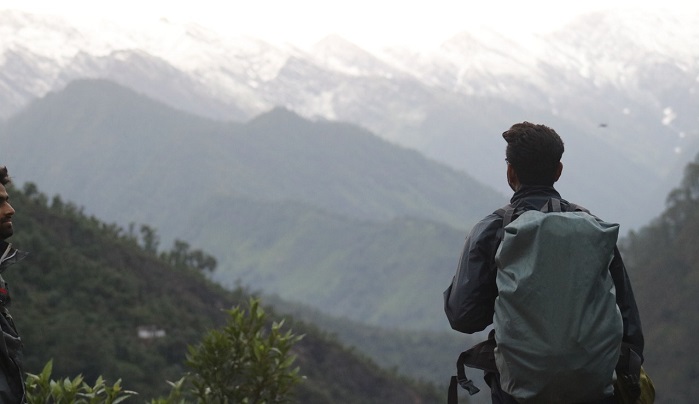
I should clarify here that I’m using “bugging out” on the assumption it involves traveling long distances by foot. This is different than bugging out by vehicle, where the BOB is just something you throw in your vehicle and go.
I think most people build bug out bags from this “must travel by foot” perspective. And really, who has more experience perfecting that skill than hikers?
Why Build a Lightweight Bug Out Bag?

When you suggest that someone should build a lightweight bug out bag, they usually hear one thing – “cut gear.” Preppers love their gear, and hearing phrases like “two is one and one is none” underscores how important gear is to prepping. That is generally true, but when it comes to bugging out – weight matters.
You need a lightweight bug out bag because it will be easier to carry for long periods of time. You will be faster, have more energy, and you can evade others much more easily. With lightweight bags – speed is your strength.
While we can all benefit from a lightweight bag, there are three types of people in particular who truly need lightweight bug out bags:
- Anyone whose physical strength is not what it used to be (older adults and those of us who could use some extra strength training),
- People who will need to travel long distances to reach their bug out location, and
- Children.
Even if you do not fall into one of those three categories, it still holds that the lighter you travel, the faster you travel. Learn more about choosing the best bug out backpack.
How Light is “Lightweight”?
There is no set answer on what the ideal weight is for a bug out bag. What is light for me might be heavy (or featherweight) for you. At the same time, what I need to carry may not be the same as what you need to carry. We have different needs. That said, there are a few standards by which we can measure how heavy a pack “should” be.
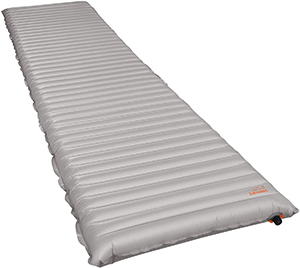
Ultralight backpacking is a style of backpacking that focuses on using the lightest, most simple gear you can find – and just the bare minimum gear at that. This is on the more extreme side of hiking, but its principles are used by Appalachian Trail hikers and others who want to cover significant amounts of terrain in short order.
Ultralight backpackers typically aim to have their pack weigh between 10 and 15 pounds.
That is hard to achieve! Not only do you have to strip down to the absolute bare minimum, but you often must pay extra for lighter products. An example would be spending more for the lightest, most comfortable sleeping pad you can find. Lightweight? You bet. Cost more? That too.
A more traditional hiker’s backpack, on the other hand, is said to weigh between 30 and 60 pounds.
Having started my hiking days in the early 90s, I firmly land in that latter category, well before ultralight hiking became a trend. My packs for overnight hikes have ranged between the high 30s for three-season hiking and in the mid-50s for winter hikes. So, I think that general guide is probably accurate.
Related article: How Ultralight Backpacking Influenced my Bug Out Bag
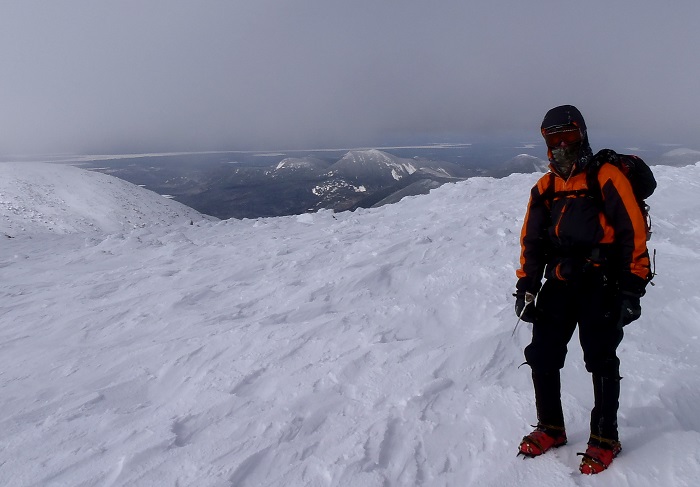
The most important thing here is not aiming for a specific weight so much as it is aiming to make your pack as light as can be.
How to Build a Lightweight Bug Out Bag
Going lightweight is where you count ounces, not pounds. “Around 3 pounds” is not an acceptable description of your gear. Is it 3 pounds 8 ounces or 3 pounds 2 ounces? It makes a difference. Ounces add up!
5 Steps to Building a Lightweight Bug Out Bag
Follow these simple steps to examine your existing pack or to build a new one from scratch:
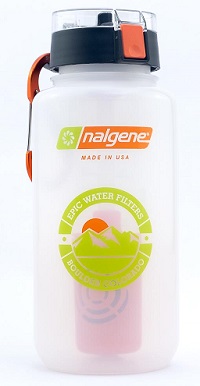
- Get Organized
- Weigh Your Gear
- Respect Your Needs
- Respect Your Budget
- Cut the Weight
1. Get Organized
Find a pen and paper and brainstorm what the minimum gear you would need to reach your bug out destination is. Then organize that gear into piles based on their function (i.e. fire, security, clothing, etc.).
Look for gear that might cross multiple functions. For example, a quality multi-tool could also suffice as all the knife you will need. As another example, you could buy a Nalgene bottle with a built-in purifier. In these cases, it’s not “two is one” but “one is two.”
2. Weigh Your Gear
You need to weigh your individual gear and record the weight. Look closely at the various types of products in the same categories. This will help you to compare the pros and cons of cutting weight in some areas to allow more weight in others. You may find that one product is more rugged than another, but also weighs significantly more. Be realistic with yourself – is the extra durability worth that extra weight? Sometimes the answer will be yes. Other times it will be no.
3. Respect Your Needs
Remember your needs. If you live in Maine, like I do, you need winter gear to cycle in and out of your bag with the seasons. Some people are naturally colder than others, so one person might need a heavier winter hat while another might get by with a lightweight beanie.
Remember, you are lightening your pack to make you more adept at survival, not to sacrifice survival. There is a balance.
4. Respect Your Budget
I noted how ultralight gear usually costs significantly more. The technology has advanced by leaps and bounds. So, while you might want the latest lightweight tech, you have to work within your budget. That is another balancing act.
You can be creative – within limits. For example, you might think about saving money and carrying a simple camping tarp instead of an ultralight bivy tent. There is nothing wrong with that, but the tarp might be better suited to a vehicle bag.

The tarp in the above example may prove more versatile, and it certainly costs less, but you would be mistaken to think it weighs less. The 10×12 tarp weighs 35.2 ounces. The bivy tent weighs just 16.2 ounces. That is a massive difference. The bivy will pack smaller, too!
5. Cut the Weight
Now you have come to the hardest part of all – figuring out what to cut. The heaviest, most questionable items are your first targets.
Speaking of targets – how much ammunition are you planning to carry? How much does it weigh? Does it make sense to carry less. I know, I know – perish the thought! Alternatively, if you’re packing a heavy handgun, consider buying something smaller and lighter. I told you this is the hardest part!
Here are a few ideas on ways to cut the weight…
Leave it behind. I know some of you will bristle at the idea of leaving equipment behind, but I know I bristle at what I see some people carry on their backs. Ask yourself, “Is this item critical to my survival?” If it’s not, leave it behind. Nothing weighs less than nothing!
Purchase ultralight gear. Buying ultralight gear is the fastest, easiest way to cut weight. This, of course, will have to be balanced by the need to respect your budget. A few of my favorite places to buy lightweight hiking gear are:
There are other stores, but these – EMS in particular – will often run sales with big discounts. In the spirit of respecting your budget, watch for sales across different stores.
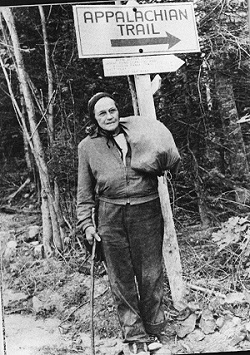
Look at your feet. The weight on your feet (your footwear) requires 4-6 times the amount of energy as carrying that same weight on your back. In other words, skip heavy combat boots in favor of lighter hiking boots (again, check the stores I listed above for plenty of light hiking footwear options).
Grandma Gatewood was a pioneer in the field of ultralight hiking. She became the first person to hike the Appalachian Trail three times, and the last time she did it was in 1963 at the age of 75. What did she wear on her feet? Keds! (Read her full story.)
Related article: Bug Out Bag Advice for Women
Food. Food is heavy. I know there is nothing worse than being hungry while on the move and burning calories. I also know I over-pack on food every. single. time.
Focus on caloric intake and ease of cooking. Bugging out is supposed to be temporary. You do not need fine dining. If you can get by on a handful of MREs to get to your destination, do that. Using a few of those versus freeze dried foods may allow you to cut the weight of a stove – a big weight savings!
Group Gear. If you know for certain that you will be bugging out with others (i.e. you would rather die than bug out without your spouse, child, etc.), then it makes sense to plan on sharing gear where possible. A camping stove is a perfect example, as is a handheld CB radio, a tent or tarp big enough to cover the number of people in your party, that sort of thing.
You just need to make sure you plan accordingly for two people if that is your plan. Yet another example:
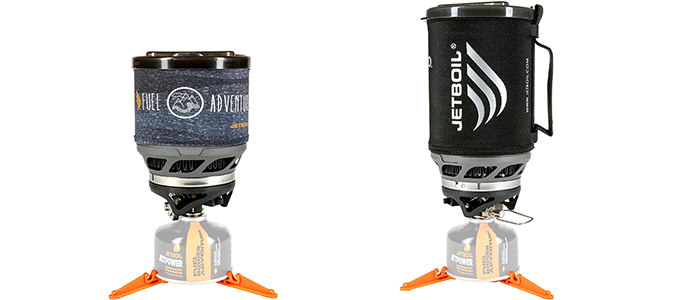
The MicroMo Cooking System (left) weighs just 12 ounces. The SUMO Cooking System (right) weighs 16 ounces. However, the MicroMo is really only good for one person whereas the SUMO is better suited for two. BUT, if you are packing one stove for two people, you save 8 ounces (two MicroMos versus one SUMO).
Final Lightweight Bug Out Bag Helpful Hints
Do not forget to look at the bag itself. A heavy pack is well-suited for a heavy load, but if you are not carrying a heavy load, you do not need a heavier pack. Also, unless you are just planning to bug out across town, you pack should absolutely have a strong, padded waist belt. These are crucial to comfort and getting the weight off your shoulders and onto your hips.
Oh, and one other thing, check your body weight. If you are carrying extra pounds around your waist, do your best to shed some of it. That will benefit you in daily life, not just when bugging out.
Thoughts, comments, suggestions? I don’t pretend to have all of the answers. What works for you?

4 comments
Good article that focused on the decision making process versus just telling people what they should buy. Very practical and not as confusing as some articles or as extreme. Sure one wants to cut weight, but if you’re planning to camp along the way, replenish or resupply then you might carry a bit more or maybe carry less since you can resupply as you travel. I love the comment that one has to pack enough to survive regardless of weight or opposing those who view going minimal as a rule.
Also, not mentioned was stripping down gear or drilling holes to lighten equipment. Sometimes people have good stuff at home, but don’t think to consider things they already own or can repurpose.
A great guide to customize your bug-out bag. I appreciate the questions you posed to help identify the areas to save weight and find items that can fulfill multiple needs. Agree that too many lists out there are trying to be completely comprehensive about including everything possible rather than helping individuals apply their personal situations to put together a realistic bug-out bag.
For sure. I’ve seen people talk about stuff stacks of “how-to” books in their bug out bags! I hope they don’t have to walk for miles with those.
When it comes to carrying food, I go with Datrex lifeboat rations. Like you said, the food isn’t meant to be gourmet. The rations don’t require cooking, have all the calories you need & there are alot for the package size. You can even break them up, add hot water & you have a warm breakfast porridge.